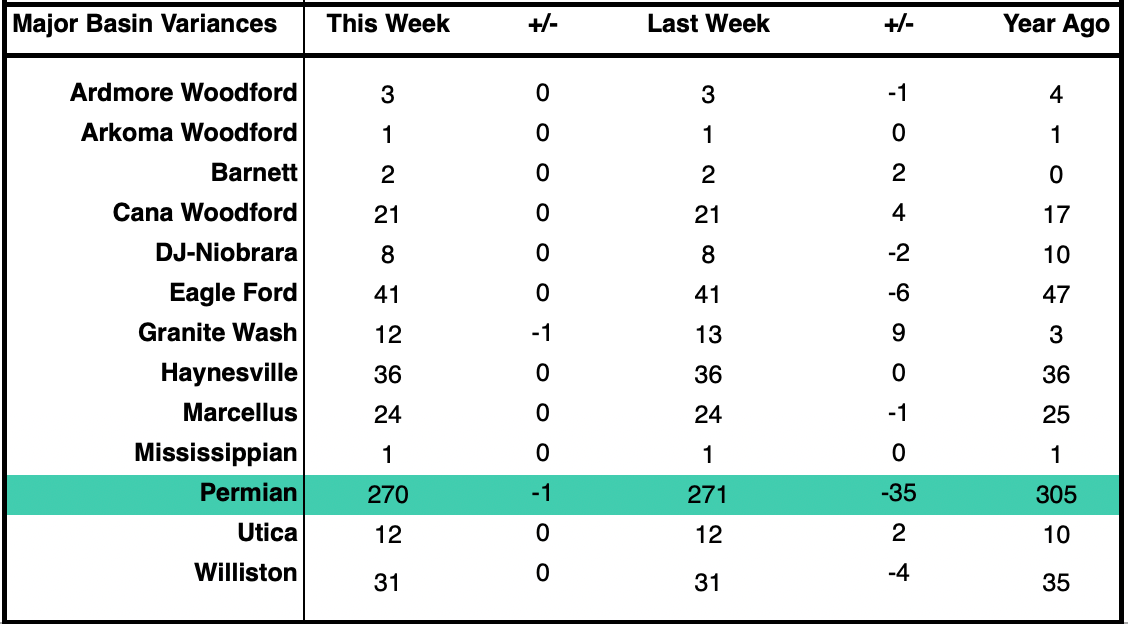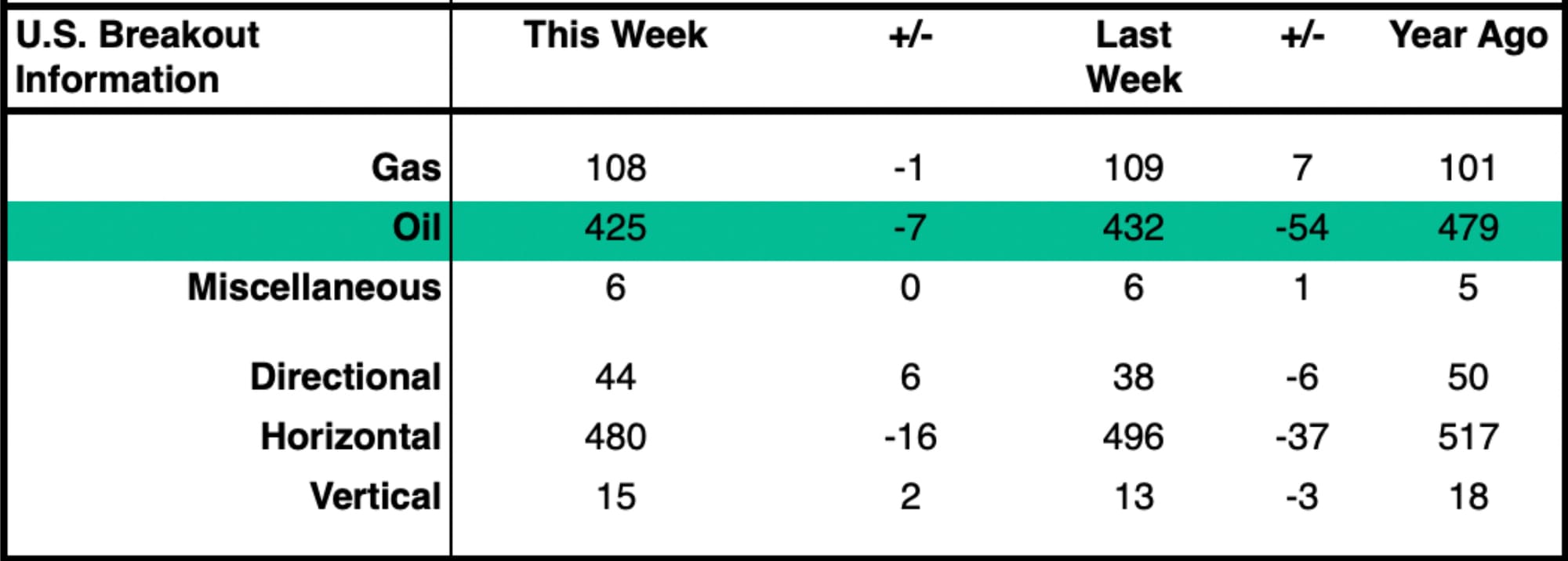Permian Rig Count Falls to 270 — Lowest Level Since 2021

MIDLAND, TX — The Permian Basin’s active oil and gas rig count dropped to 270 this week, hitting its lowest point since October 2021, according to the latest Baker Hughes report. The one-rig decline marks an 11% year-over-year drop and adds to a broader trend of falling activity across U.S. shale.
This is the ninth straight weekly drop in U.S. rig activity and the fourth consecutive month of declines—a signal that tight capital discipline continues to define oilfield strategy in 2025.


What It Means for the Oil Industry
- Investor-first drilling discipline: Public E&Ps remain focused on shareholder returns, not growth-at-all-costs.
- Permian still leads, but softens: The basin continues to dominate U.S. output, but this dip underscores a shift toward “rigless” production strategies—relying on DUCs and refracs instead of new wells.
- Local impacts growing: Midland County saw two rigs shut down, while Reagan County bucked the trend with a rare rig addition.
Strategic Context for Energy Executives
- Rig counts are no longer the best production barometer. Operators are squeezing more from each site, using automation, data, and pad drilling to do more with less.
- Efficiency, not scale, is the new upstream metric. With Q2 earnings approaching, analysts will zero in on cost-per-barrel improvements, not just production growth.
Bottom Line
The Permian’s rig count decline is a clear marker of the shale sector’s evolving priorities: fewer rigs, leaner capex, and more focus on cash generation. But paired with favorable legal shifts—like the produced water ruling—operators may find new ways to unlock value beyond the drill bit.





